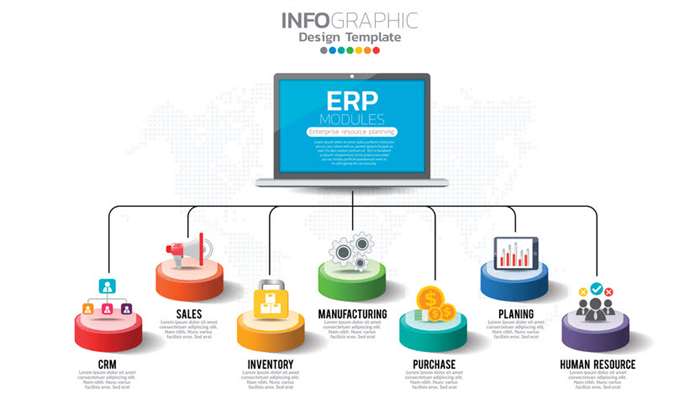ITDR solutions add layers of defense by efficiently detecting and responding to identity-based attacks. This security method offers visibility to credential and identity misuse, privilege escalation activities, and entitlement exposures and extends from the endpoint to https://globalcloudteam.com/ the Active Directory and multi-cloud environments. But building secure cloud applications may require a shift in thinking for many developers. Although security is often an afterthought in traditional application development, it must be front and center in the cloud.
Additionally, data centers are recommended to be frequently monitored for suspicious activity. Cloud encryption transforms data from plain text into an unreadable format before it enters the cloud. However, businesses should keep the shared responsibility model in mind and take control of their own encryption. Additional levels of advanced data protection include multi-factor authentication , microsegmentation, vulnerability assessment, security monitoring, and detection and response capabilities. Network security refers to securing the perimeter of a data center, and the movement of data inside or outside the data center. This entails using network infrastructure and access controls to manage data flow and prevent digital threats from entering the network.
Improved DDoS protection
Cloud security is the protection of data stored online via cloud computing platforms from theft, leakage, and deletion. Methods of providing cloud security include firewalls, penetration testing, obfuscation, tokenization, virtual private networks , and avoiding public internet connections. The best cloud computing security solutions provide data security by design.

Penetration testing is the process of performing offensive security tests on a system, service, or computer network to find security weaknesses in it. Scanning and penetration cloud security solutions testing from inside or outside the cloud should be authorized by the cloud provider. Violation of acceptable use policies can lead to termination of the service.
Granular, policy-based IAM and authentication controls across complex infrastructures
Moving to the cloud has some significant benefits for businesses, but it can also introduce new risks outside the scope of traditional cybersecurity practices. Cloud security consists of several elements working simultaneously to ensure comprehensive security against threats. Four critical security solutions include visibility into cloud data, control over cloud data, access to cloud data and applications, and compliance. Four cloud security solutions include cloud data visibility, control over cloud data, access to cloud data and applications, and compliance. With today’s sophisticated, automated attacks, only advanced, integrated security can prevent successful breaches.

Many enterprises also often find it cost-effective to implement the same tools in their public clouds as they have within their corporate local area networks . This prevents administrators from having to recreate security policies in the cloud using disparate security tools. Instead, a single security policy can be created once and then pushed out to identical security tools, regardless of whether they are on premises or in the cloud. Cloud security is the whole bundle of technology, protocols, and best practices that protect cloud computing environments, applications running in the cloud, and data held in the cloud. Securing cloud services begins with understanding what exactly is being secured, as well as, the system aspects that must be managed. Cloud providers host services on their servers through always-on internet connections.
Private vs. Public Clouds
The confidential computing initiative helps enable an emerging use case in cross-organizational collaboration known as multiparty computing. For example, the University of California San Francisco created a platform enabled by Intel® SGX to ensure patient confidentiality while using algorithms to engage curated data sets. This allows different hospitals to combine their data and accelerate research, which could lead to early disease detection or fast-tracking drug trials.
They are most viable for SMB and enterprise applications since they are generally too complex for personal use. But it’s these organizations that could use the blend of scale and accessibility of the cloud with onsite control of specific data. Cloud computing security risks can affect everyone from businesses to individual consumers. For example, consumers can use the public cloud for storing and backing up files , for services like email and office applications, or for doing tax forms and accounts. Unfortunately, malicious actors realize the value of cloud-based targets and increasingly probe them for exploits.
Security Research & Services
IT teams can secure access to content with granular permissions, SSO support for all major providers, native password controls, and two-factor authentication for internal and external users. Companies can rely on enterprise-grade infrastructure that’s scalable and resilient — data centers are FIPS certified, and every file is encrypted using AES 256-bit encryption in diverse locations. Customers also have the option to manage their own encryption keys for complete control. Security administrators must have plans and processes in place to identify and curb emerging cloud security threats. These threats typically revolve around newly discovered exploits found in applications, OSes, VM environments and other network infrastructure components.
- DLP solutions use a combination of remediation alerts, data encryption, and other preventative measures to protect all stored data, whether at rest or in motion.
- Compliance Assessments— Review and update compliance assessments for PCI, HIPAA, Sarbanes-Oxley and other application regulatory requirements.
- Cloud providers must keep up to date with their encryption as the data they typically contain is especially valuable.
- A data owner always expects that her or his data in a cloud can be stored correctly and trustworthy.
- External actors or insiders can exploit weak access controls due to misconfiguration, which can lead to unintentional but damaging data leaks.
- Intel® TME helps ensure that all memory accessed from the Intel® CPU is encrypted, including customer credentials, encryption keys, and other personally identifiable information.
- In 2014, the National Institute of Standards and Technology developed a voluntary framework to guide organizations to prevent, detect, and respond to cyberattacks.
The CSP should also support MFA for both internal and external users and single sign-on, so users can just log in once and access the tools they need. Security in cloud computing is crucial to any company looking to keep its applications and data protected from bad actors. Understand the shared responsibility model, including the responsibilities of your CSPs and your security team. Secure Access Service Edge and zero-trust network access are also emerging as two popular cloud security models/frameworks. The shared responsibility model outlines the security responsibilities of the CSP and the customer. Cloud assets are provisioned and decommissioned dynamically—at scale and at velocity.
Hybrid Clouds
Organizations can instantly access new resources and services without waiting for hardware delivery or installing on-premises infrastructure. This post explains what cloud security is and the challenges that come with it, as well as some effective tools for implementing cloud security solutions. An important aspect of automation is that security controls should be self-updating, able to change their security policies when new features or configurations are introduced in cloud systems. Any tool that requires manual tuning of security policies can create major administrative overheads for security teams. Improve the security and compliance posture of your organization and leverage the controls inside of cloud assurance to build stronger value in your business systems.

